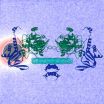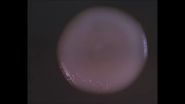(Press-News.org) Washington, DC—A new study in human placenta provides the strongest evidence to date that Endocrine Disrupting Chemicals (EDCs) can interfere with thyroid hormone action in pregnant women. The implication is that flame retardant chemicals called polychlorinated biphenyls (PCBs) can infiltrate the placenta during pregnancy and affect thyroid hormone activity at the cellular level, according to a new study published in the Endocrine Society's Journal of Clinical Endocrinology & Metabolism (JCEM).
PCBs were used in transformers and other electrical equipment, paints, adhesives and tape. Although the endocrine-disrupting chemicals were banned in the United States in 1979, PCBs still are released into the environment from disposal sites or products manufactured prior to the ban. Most people have been exposed to low levels of PCBs.
Scientific findings suggest these endocrine-disrupting chemicals interfere with the thyroid hormone. The hormone is essential for brain development in fetuses and newborns.
"As endocrine-disrupting chemicals, PCBs interfere with the way the thyroid hormone functions, but they don't actually change the amount of the hormone found in the body," said one of the study's authors, R. Thomas Zoeller, PhD, of the University of Massachusetts in Amherst, MA. "Although these effects are largely invisible in scientific studies that only judge thyroid activity by measuring hormone levels, they may be having a real impact on infants' brain development."
The prospective birth cohort study examined the effects of low-dose chemical exposure in 164 pregnant women. Tissue from the placenta – the structure that develops in the uterus to provide oxygen and nutrients to the fetus during pregnancy – was analyzed for the enzyme CYP1A1.
This enzyme changes endocrine-disrupting chemicals into a form that can interfere directly with the body's thyroid hormone receptors.
Researchers found that in pregnancies where the placenta contained higher amounts of the enzyme, the tissue also exhibited signs of thyroid disruption. Levels of two thyroid-regulated genes tended to be higher in these pregnancies, although the mother's overall thyroid hormone levels did not change.
"Whatever is happening in the placenta likely reflects what is happening in the fetus," Zoeller said. "To truly understand how endocrine-disrupting chemicals may be affecting pregnancies, the findings show we need to study not only hormone levels, but hormone activity at the cellular level."
The effects of endocrine-disrupting chemicals may be particularly insidious in people who smoke, Zoeller said. The enzyme CYP1A1 is supposed to clean the blood, and the body produces more of this enzyme when it is exposed to cigarette smoke. The researchers found pregnant women who smoked tended to have higher levels of the enzyme in the placental tissue.
Other authors of the study include: Thomas Luke Wadzinski, Katherine Geromini, Judy McKinley Brewer and Ruby Bansal of the University of Massachusetts; and Nadia Abdelouahab, Marie-France Langlois and Larissa Takser of the University of Sherbrooke in Sherbrooke, Quebec.
The study, "Endocrine Disruption in Human Placenta: Expression of the Dioxin-Inducible Enzyme, Cyp1a1, is Correlated with that of Thyroid Hormone Regulated Genes," was published online, ahead of print.
INFORMATION:
Founded in 1916, the Endocrine Society is the world's oldest, largest and most active organization devoted to research on hormones and the clinical practice of endocrinology. Today, the Endocrine Society's membership consists of over 17,000 scientists, physicians, educators, nurses and students in more than 100 countries. Society members represent all basic, applied and clinical interests in endocrinology. The Endocrine Society is based in Washington, DC. To learn more about the Society and the field of endocrinology, visit our site at http://www.endocrine.org. Follow us on Twitter at https://twitter.com/#!/EndoMedia.
Washington, DC—Exposure to cold temperatures can convert white fat tissue from the thighs and belly to beige fat that burns calories for heat, but this biological response is hampered in obese people, according to a new study published in the Endocrine Society's Journal of Clinical Endocrinology & Metabolism.
Known as brown adipose tissue (BAT), brown fat is a particular kind of fat tissue that burns energy and glucose to generate heat. Babies and small animals rely on brown fat to stay warm. Brown fat's energy expenditure helps to prevent obesity in rodents.
While ...
Researchers from the National Cancer Institute report that decaffeinated coffee drinking may benefit liver health. Results of the study published in Hepatology, a journal of the American Association for the Study of Liver Diseases, show that higher coffee consumption, regardless of caffeine content, was linked to lower levels of abnormal liver enzymes. This suggests that chemical compounds in coffee other than caffeine may help protect the liver.
Coffee consumption is highly prevalent with more than half of all Americans over 18 drinking on average three cups each day ...
CAMBRIDGE, Mass--A long-sought goal of creating particles that can emit a colorful fluorescent glow in a biological environment, and that could be precisely manipulated into position within living cells, has been achieved by a team of researchers at MIT and several other institutions. The finding is reported this week in the journal Nature Communications.
The new technology could make it possible to track the position of the nanoparticles as they move within the body or inside a cell. At the same time, the nanoparticles could be manipulated precisely by applying a magnetic ...
(SALT LAKE CITY)—A University of Utah-led study using X-rays and neutron beams has revealed the inner workings of a master switch that regulates basic cellular functions, but that also, when mutated, contributes to cancer, cardiovascular disease and other deadly disorders.
Learning more about how the Protein Kinase A (PKA) switch works will help researchers to understand cellular function and disease, according to Donald K. Blumenthal, Ph.D., associate professor of pharmacology and toxicology at the University of Utah (U of U) College of Pharmacy who led the study. ...
A supernova is the cataclysmic death of a star, but it seems its remnants shine on. Astronomers have found a pulsating, dead star beaming with the energy of about 10 million suns.
This is the brightest pulsar -- a dense stellar remnant leftover from a supernova -- ever recorded, and was seen using NASA's Nuclear Spectroscopic Telescope Array, or NuSTAR.
Lawrence Livermore LLNL researchers were involved in the design and testing of the NuSTAR X-ray optics.
"You might think of this pulsar as the 'Mighty Mouse' of stellar remnants," said Fiona Harrison, the NuSTAR principal ...
NASA's Aqua satellite passed over Super Typhoon Vongfong as it tracked through the Philippine Sea on Oct. 9. Instrument aboard Aqua captured visible and infrared images of the now Category 4 Super Typhoon.
Two instruments aboard NASA's Aqua satellite provided visible and infrared data on the Super Typhoon: The Moderate Resolution Imaging Spectroradiometer or MODIS and the Atmospheric Infrared Sounder or AIRS instrument, respectively. MODIS captured a visible image of Super Typhoon Vongfong on Oct. 9 at 04:25 UTC (12:25 a.m. EDT) that showed two concentric eyewalls with ...
Neurodevelopmental disorders such as Down syndrome and autism-spectrum disorder can have profound, lifelong effects on learning and memory, but relatively little is known about the molecular pathways affected by these diseases. A study published by Cell Press October 9th in the American Journal of Human Genetics shows that neurodevelopmental disorders caused by distinct genetic mutations produce similar molecular effects in cells, suggesting that a one-size-fits-all therapeutic approach could be effective for conditions ranging from seizures to attention-deficit hyperactivity ...
VIDEO:
Behavior experiments in which flies were given the choice between wild-type and mutant fermentation headspace in the middle of the experiment, and they migrate accordingly.
Click here for more information.
The familiar smell of beer is due in part to aroma compounds produced by common brewer's yeast. Now, researchers reporting in the Cell Press journal Cell Reports on October 9th have discovered why the yeast (formally known as S. cerevisiae) make that smell: the scent attracts ...
Oxytocin has been called the "love hormone" because it plays an important role in social behaviors, such as maternal care and pair bonding. In a study published by Cell Press on October 9th in the journal Cell, researchers uncover oxytocin-responsive brain cells that are necessary for female social interest in male mice during estrus—the sexually receptive phase of their cycle. These neurons, found in the prefrontal cortex, may play a role in other oxytocin-related social behaviors such as intimacy, love, or mother-child bonding.
"Our findings suggest that social ...
Oxytocin, the body's natural love potion, helps couples fall in love, makes mothers bond with their babies, and encourages teams to work together. Now new research at Rockefeller University reveals a mechanism by which this prosocial hormone has its effect on interactions between the sexes, at least in certain situations. The key, it turns out, is a newly discovered class of brain cells.
"By identifying a new population of neurons activated by oxytocin, we have uncovered one way this chemical signal influences interactions between male and female mice," says Nathaniel ...


